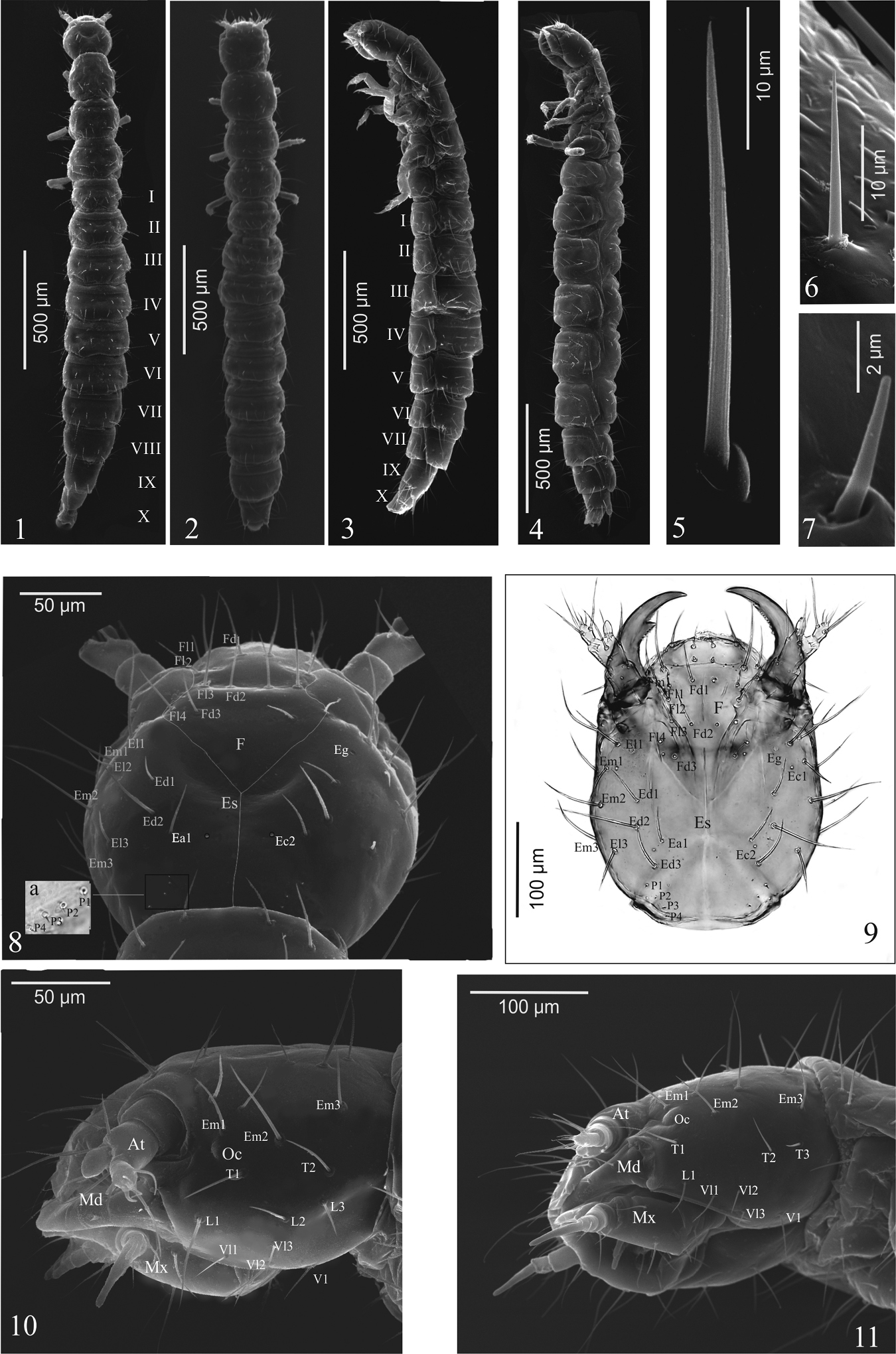
|
||
|
A. talpa (1, 3, 5, 8, 8a, 10), O. haemorrhoa (2, 4, 6, 7, 9, 11), mature larva. 1–4 habitus in dorsal (1, 2) and lateral (3, 4) aspect 5–7 abdominal setae 8–11 head in dorsal (8, 9) and lateral (10, 11) aspect. Abbreviations: I-X, abdominal segments; At, antenna; Ec, epicranial campaniform sensilla; Ed, epicranial dorsal setae; Eg, epicranial gland; El, epicranial lateral setae; Em, epicranial marginal setae; Es, epicranial suture; F, frons; Fd, frontal dorsal setae; Fl, frontal lateral setae; L, lateral setae; P, posterior setae; T, temporal setae; V, ventral setae; Vl, ventral lateral setae. |